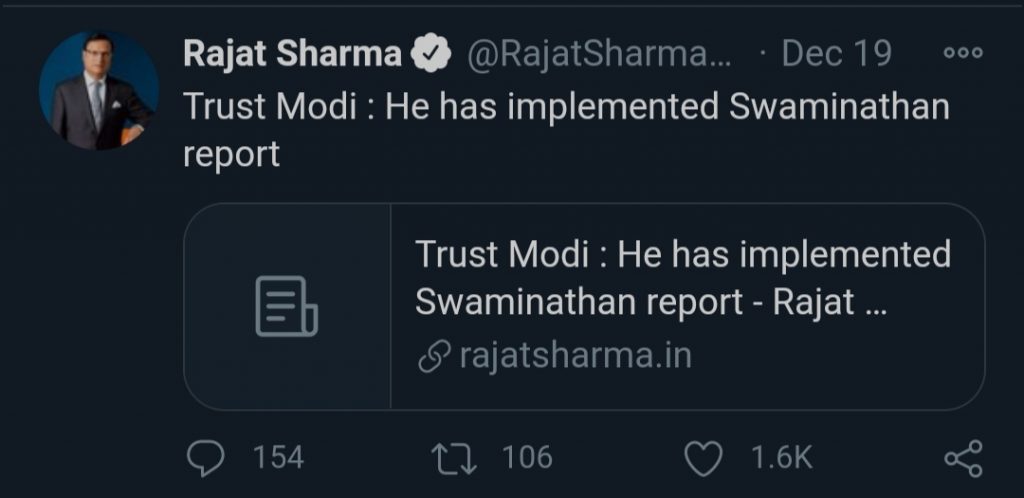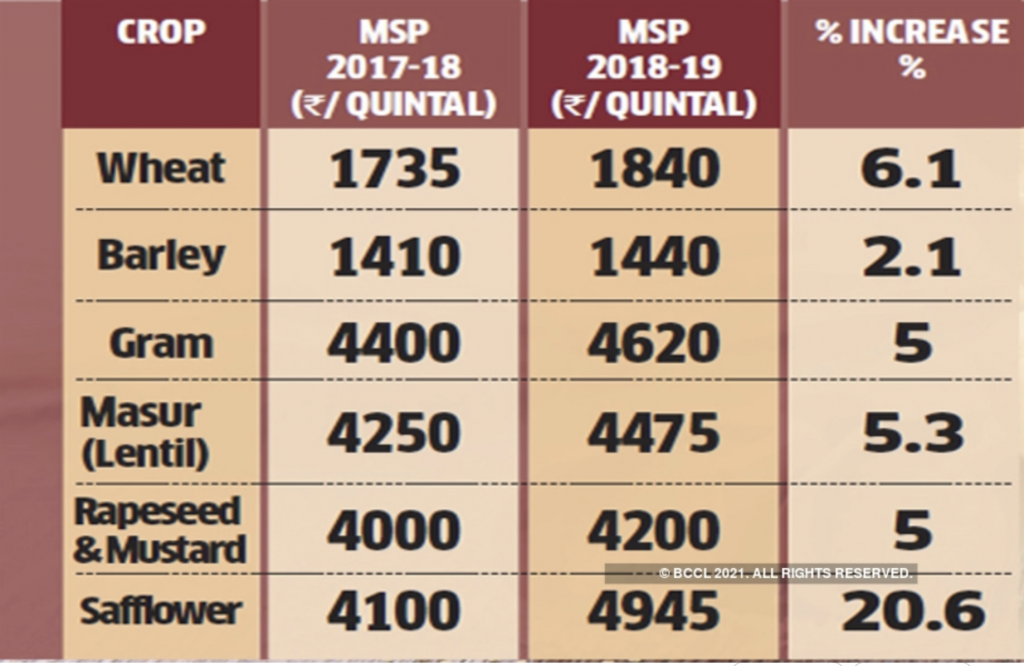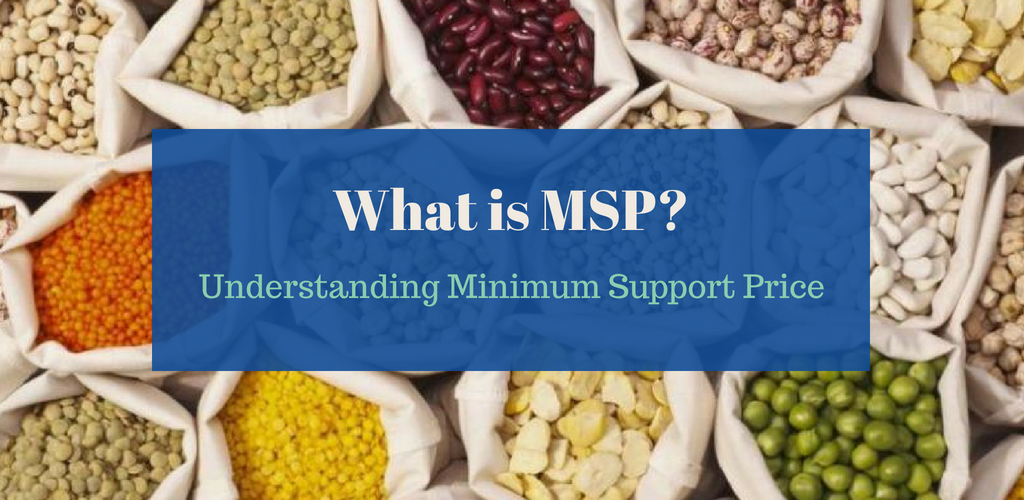By Harbaldeep Singh
Every cloud has a silver lining. The farm bills passed in India, irrespective of if you are for or against it, has stirred a global dialogue on the farming sector, food value chain (from the farmer to the fork), farmer income, farmer suicide, and opening the agriculture sector to operate in the forces of a free market. As home-office warriors continue to type away on their keyboards, churning posts and counter posts on social media engaging in this global debate, new words enrichened their overall lexicon. The words like Ordinance, APMC, MSP, Arthiyas, Mandi, Contract Farming, and Essential Commodities.
On December 30, 2020, talks between farmer unions and the government failed to resolve, as farmers refused to budge from their demand for the three farm laws’ repeal. The main bone of contention in these talks is the Minimum Support Price (MSP) for crops, which farmers fear the new law will do away with and want the government to make this a law.
The top BJP leadership, in their recent speeches, has reiterated that MSP will stay, and MSP for the 23 grains has gone up in the two years.
In this post, let’s try to understand what MSP is, how MSP is calculated, and how, even with today’s MSP price, farmers continue to receive a fraction of their due payment from the government. (Source: https://thewire.in/agriculture/narendra-modi-farmers-protest-promises-trust-msp)
Let’s start …
What is MSP?
The minimum support price is an agricultural product price set by India’s Government to purchase directly from the farmer. This rate safeguards the farmer to a minimum profit for the harvest if the open market has a lesser price than the cost incurred. The Union budget for 2018-2019 has announced that MSP would keep MSP at levels of one and half times the production cost.
The commission for Agriculture Costs and Prices (CACP) in the Ministry of Agriculture would recommend MSP for 23 crops. These include 14 crops grown during the Kharif/post-monsoon season and six in rabi/winter (Wheat, Barley, Chana, Masur, Mustard, Safflower), along with Sugarcane, Jute, and Copra.
The CACP considers various factors while recommending the MSP for a commodity. Factors considered for recommending MSP:
- Cost of production
- Changes in input prices
- Input-output price parity
- Trends in market prices
- Demand and Supply
- Inter-crop price parity
- Effect on industrial cost structure
- Effect on the cost of living
- Effect on the general price level
- Internation prices
- Parity between prices paid and prices received by farmers
- Effect on issue prices and implications for subsidy
What changed with the 2018 Budget?
The budget for 2018-2019 announced that MSPs would henceforth be fixed at 1 1/2 times the production cost for crops as a “pre-determined principle” and not on all the factors listed above.
Simply put, the CACP’s job now was only to estimate production costs for a season and recommend the MSPs by applying the 1.5 times formula.
How are the production costs fixed?
The CACP does not do any field-based cost estimates itself. It merely makes projections using state-wise, crop-specific production cost estimates provided by the Directorate of Economics and Statistics in the Agriculture Ministry. The latter is, however, generally available with a three-year lag.
WHAT is A2, A2+FL, C2?
The CACP further projects three production costs for every crop, both at the state and all-India average levels.
“A2” covers all paid-out costs directly incurred by the farmer – in cash and kind – on seeds, fertilizers, pesticides, hired labor, leased-in land, fuel, irrigation, etc.
“A2+FL” includes A2 plus an imputed value of unpaid family labor.
“C2” is a more comprehensive cost that factors in rentals and interest forgone on owned land and fixed capital assets, on top of A2+FL.
BJP Government Promise
BJP, in their 2014 and 2019 Lok Sabha manifesto, promised that they would base MSP on the C2 as recommended by the National Commission for Farmers headed by agriculture scientist MS Swaminathan.
In 2018, then Finance Minister Arun Jaitley’s Budget speech did not specify the cost on which the 1.5 times formula was to be computed.
But the CACP’s “Price Policy for Kharif Crops: The Marketing Season 2018-19” report stated that its MSP recommendation was based on 1.5 times the A2+FL costs.

(Source: Twitter)
Rajat Sharma, a prominent Indian journalist, tweeted that Modi has implemented a Swaminathan report. His claim is wrong as you have now read the Swaminathan report is based on C2 and not A2+FL.
How much farmers are loosing on the current MSP price?
These are A2+FL, C2, and MSP prices for Paddy for the year 2017-2018
| A2 + FL Cost | Rs. 1166 |
| C2 Cost | Rs. 1560 |
| MSP 2017-2018 | Rs. 1735 |
Based on A2+FL applying 1.5 times formula, the MSP is 1166 X 1.5 = Rs. 1749
Based on C2 applying 15 times formula, the MSP is 1560 X 1.5 = Rs. 2349
So even at the current MSP price, the farmers are losing Rs. 2349 – Rs. 1735 = Rs. 614 per quintal.
Look at the following chart.

MSP prices for the year 2017-19
In 2018-2019, the MSP of wheat was increased by 6% to Rs. 1840. Even though it seems to increase in the MSP on paper, the MSP is still below 2349 based on C2 applying a 1.5 times formula assuming no change in the input prices.
While the debate is still on if the introduction of a parallel market will end the APMC Mandis and MSP, but one thing is clear, even with the current setup of APMC Mandis, farmers are not getting the right price on their produce.
The farming sector needs reform, but we need a holistic look at the issues and input from the stakeholders for whom agriculture is their lifeline before passing a bill and making it a law.
Harbaldeep Singh currently lives in Boston, U.S.A., and works as a Product Management Leader in the Healthcare industry. He is a filmmaker and a Founder of Nishkam TV, where he teaches and mentors young kids about filmmaking and the art of storytelling to address the current societal issues.













